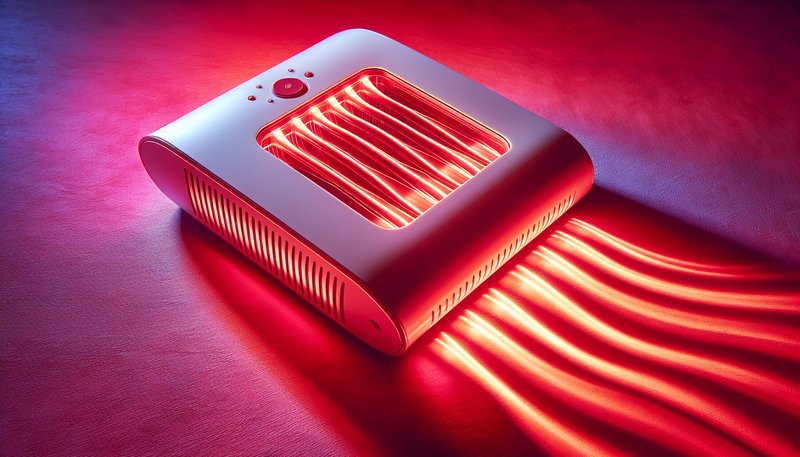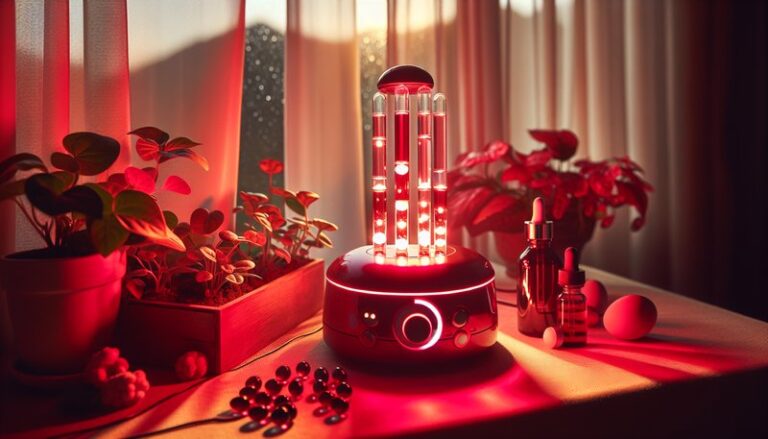How Long Has Red Light Therapy Been Around?
How Long Has Red Light Therapy Been Around?
What if there was a treatment with roots that trace back over a century, yet has only recently gained prominence in the wellness community?
This article will explore the timeline of red light therapy, its origins, and its evolution into a widely used treatment option today. We’ll examine early research, notable advancements, and current applications, providing a comprehensive view of how this therapy has developed over time.
Discover our thoughts on Duration for Red Light Therapy on Face?
Key Takeaways
- Red light therapy has its origins in the early 1900s, becoming more popular in recent years for various health benefits.
- The therapy utilizes specific wavelengths of light to promote healing and reduce inflammation.
- Today, red light therapy is employed in clinical settings and home use devices, reflecting its versatility and growing acceptance.
What is Red Light Therapy?
Red light therapy (RLT) is a treatment that uses low-level wavelengths of red light to promote healing and reduce various health issues. This technique operates primarily through the application of specific light wavelengths, often in the range of 600 to 650 nanometers.
Historically, red light therapy was first popularized in the early 1900s when scientists discovered that certain light wavelengths could speed up the healing of wounds. The therapy gained traction in the 1960s when Dr. Endre Mester from Hungary conducted experiments revealing the positive effects of laser light on skin healing and hair regrowth.
What are the Benefits of Red Light Therapy?
Red light therapy is associated with an array of benefits, which will be detailed in the following points.
Enhances Skin Health
Red light therapy has been shown to improve skin texture and reduce signs of aging. Clinical studies indicate that it can effectively diminish wrinkles and increase collagen production by stimulating fibroblasts in the skin.
Aids in Muscle Recovery
Athletes and fitness enthusiasts utilize red light therapy to enhance muscle recovery after strenuous workouts. The therapy increases blood flow and reduces inflammation, leading to faster healing of muscles and tissues.
Supports Pain Management
Many individuals use red light therapy for chronic pain management. Research suggests that it can mitigate pain levels in conditions such as arthritis, fibromyalgia, and joint pain by reducing inflammation and promoting healing processes.
Improves Mood and Sleep Quality
Recent studies point to the therapy’s potential in enhancing mood and sleep quality. By influencing melatonin production and reducing anxiety, red light therapy may offer a natural solution for sleep disorders and mood-related issues.
Is it Possible to Use Red Light Therapy at Home?
Home use of red light therapy has become increasingly popular with the introduction of user-friendly devices, but questions remain regarding safety and efficacy.
What are the Advantages of Home Use?
Accessibility is one of the key advantages of home red light therapy. Individuals can conveniently integrate treatments into their daily routines without the need for professional guidance. Additionally, home devices often come at lower costs than recurring clinic visits.
What are the Disadvantages of Home Use?
However, there are some drawbacks to home therapy. Devices may differ greatly in quality and efficacy, leading to inconsistent results. Without professional supervision, users may also risk overexposure or misuse of the technology, impacting the therapy’s benefits.
What are the Things to Consider Before Using Red Light Therapy at Home?
Before opting for red light therapy, there are important factors to consider to maximize safety and effectiveness.
Device Quality
Choose high-quality products from reputable manufacturers to ensure effective treatment. Check for clinical studies or certifications validating the device’s claims.
See the comprehensive guide When to do red light therapy?
Treatment Consistency
Regular use is crucial for optimal results. Establish a consistent schedule to reap the full benefits of red light therapy.
Consultation with a Professional
Before starting therapy, particularly for chronic conditions, consult a healthcare provider. They can provide valuable guidance and tailor therapy to your specific needs.
What are the Alternatives to Red Light Therapy?
If red light therapy does not suit your needs, there are several alternatives available for skin health, pain management, and overall wellness.
Cold Laser Therapy
Cold laser therapy, similar to red light therapy, utilizes low-level lasers to promote healing without damaging surrounding tissue. It’s often employed in physical therapy to expedite recovery.
Ultrasound Therapy
This treatment uses sound waves to promote tissue healing and repair. It is commonly used in physiotherapy to address muscle injuries and reduce inflammation.
Infrared Saunas
Infrared saunas emit infrared light, which can penetrate deeper layers of skin for detoxification and relaxation, offering a different approach to wellness compared to red light therapy.
Conclusion: Is it Recommended to Use Red Light Therapy?
Red light therapy has demonstrated its efficacy in various applications, from skin health to muscle recovery and pain management. However, the effectiveness can vary depending on individual circumstances, device quality, and consistency of use. Consulting with a professional and considering home therapy as a complement to, rather than a substitute for, traditional treatments may offer the best results.
Frequently Asked Questions
How long does each session of red light therapy last?
Session times can vary, typically ranging from 5 to 20 minutes, depending on the device and specific treatment goals.
How often should I use red light therapy?
Frequency of use can depend on the specific condition being treated. Many users find benefit in 3-5 sessions per week.
Are there any side effects?
Red light therapy is generally considered safe. However, some users may experience mild skin irritation or fatigue. It’s essential to follow guidelines for use to minimize risks.
Can anyone use red light therapy?
While many individuals can benefit, those with specific medical conditions or on certain medications should consult a healthcare provider before beginning therapy.





